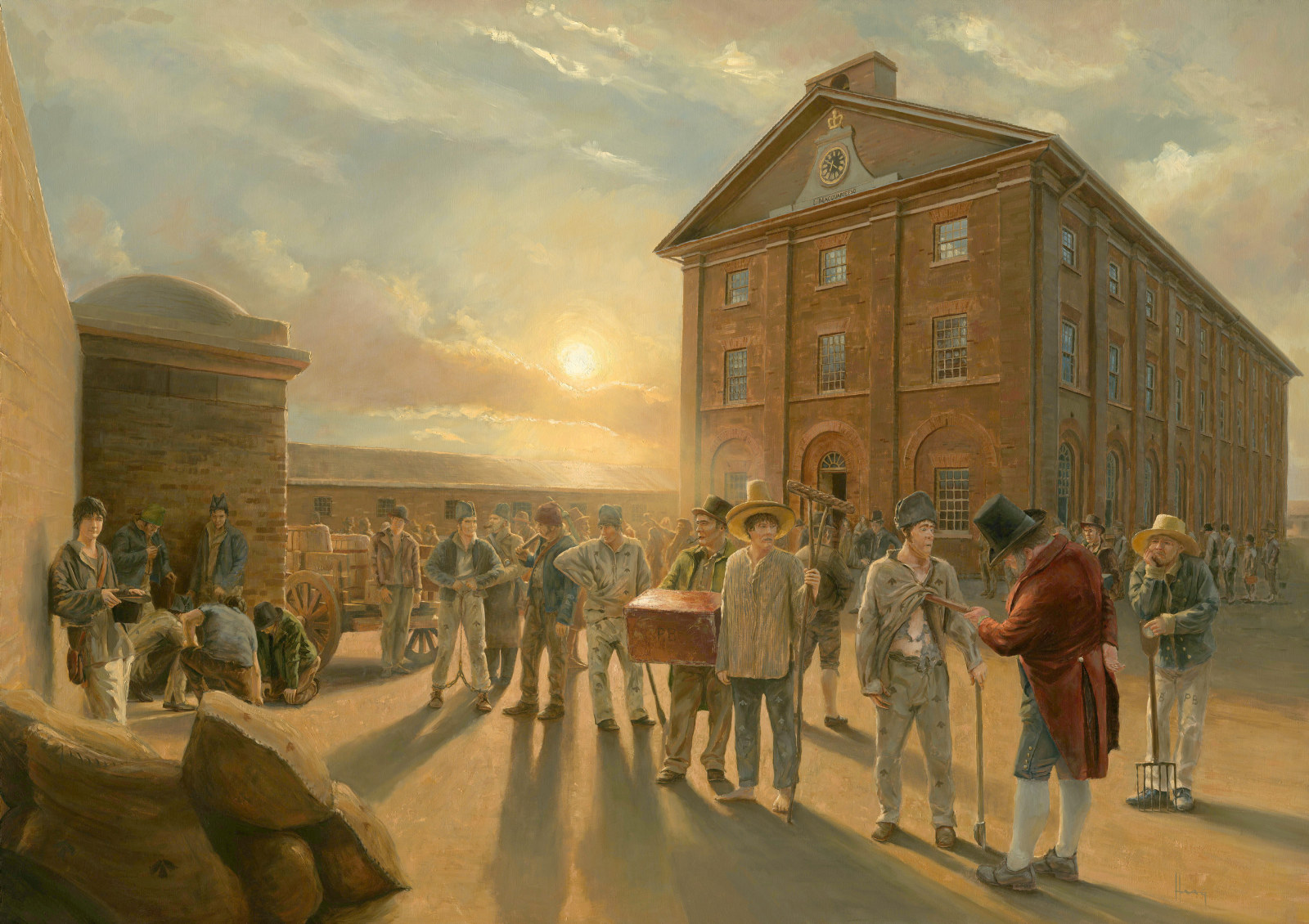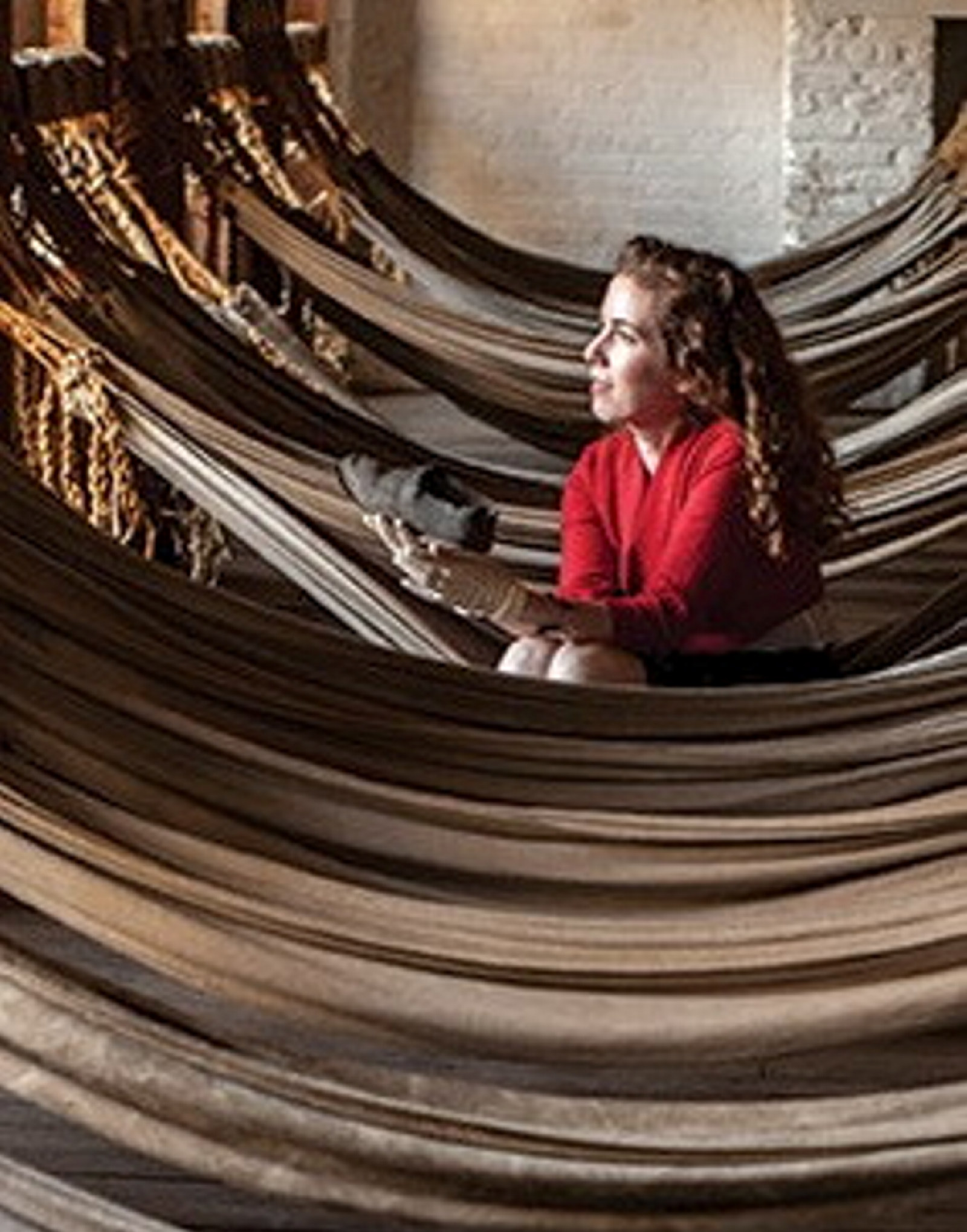Joseph Smith
In 1817, Joseph Smith was due to be top’d, twisted or scrag’d (executed by hanging). Or so his fellow prisoners might have said about him in London’s underworld ‘flash’ slang, as he awaited his execution in the gloomy ‘salt-boxes’ (condemned cells) at London’s notorious Newgate Gaol. Little did Smith know, but he was soon to become integral to the construction of the Hyde Park Barracks, another prison-type building, on the other side of the world.
The 33-year-old master brickmaker had been tried for burglary at the Old Bailey in London on 2 July 1817, and sentenced to death. Imagine the distress he felt as he prepared to die, knowing he must soon say his final goodbyes to friends and family, in particular his wife, Mary.
Following a Newgate Gaol tradition, Smith paid a few coins to an engraver to make a love token for Mary. He scratched in the words ‘Cast for Death’, and misspelled their surname with a ‘y’. The same engraver also made a token of the same design for condemned prisoner Elijah Swainson.1 While waiting for death, the men must have met their distraught wives, and passed on the love tokens. But at the eleventh hour, after six weeks in the cells, both Smith and Swainson were reprieved. The flash men would now say Smith was to be lag’d for his wind, or transported for the term of his natural life. By 1 November they were on board the Batavia, leaving Plymouth to begin a five-month voyage to New South Wales.
This is to Certify that Joseph Smith … was this Day admitted to the Freedom of the Worshipful Company of Tylers and Bricklayers …
Letter of admission to the Freedom of the City of London, 1810
Smith arrived in Sydney on 5 April 1818 while the new Prisoners’ Barracks at Hyde Park was under construction. As soon as Governor Macquarie’s officials heard Smith was a brickmaker, he was most likely snapped up and sent directly to the brickfields – the new barracks needed more bricks. Falling in with a brickmaking gang of eight men, Smith’s level of expertise probably meant he was put in charge of moulding the bricks, first throwing sand into the timber mould, pushing in the clay mixture, and then scraping off the excess with his ‘strike’. When the bricks stuck in the mould, Smith pushed his thumb into the wet clay to release them. And the overseer would leave his mark too, poking his fingers into one of the bricks, to keep a tally of how many bricks Smith had made. Each gang was expected to make 3000 in one day, no less. Other workers carted Smith’s red building blocks over to the barracks construction site, where bricklayers were adding them to the partially built walls, gradually rising within the enclosed yard. When the barracks opened in May 1819, Smith was likely among the first convicts to test out the hammocks in the sleeping wards.
Your petitioner arrived in the colony per ship Batavia … in April 1818 under sentence of transportation for life and hath been employed in government ever since as a brick maker … the Wife of Your Petitioner followed soon after per ship Lord Wellington under a Similar Sentence …
Convict Joseph Smith, 1822
But what of Mary Ann Smith, the recipient of Joseph’s love token? Possibly out of desperation to follow her husband (or by accident?), Mary (aka Maria), got herself convicted too, on 17 June 1818, just a couple of months after Joseph sailed for the colony. Two years later, Joseph wrote to Governor Brisbane, requesting a ticket of leave so that he could take better care of his wife, who was dependent on him. In support, overseer Absalom West described him as a ‘sober and well disposed man’, and James Wilshire declared that the industrious Smith had made 60,000 bricks for him. No success though – Smith had to continue government work until 1827, when both he and Mary finally received their tickets of leave, to work for themselves in Sydney. From here though their story seems to take a turn for the worse – Smith’s ticket was cancelled, presumably for a secondary crime, and a year later he was working in Road Gang 19 at Wombat Bush near Paddy’s River, building the Great Southern Road. Four years later, still a convict, Joseph’s sad life was cut short in Bathurst, where he died from ‘exposure to the cold’. In the same year, Mary married another Hyde Park Barracks bricklayer convict, John Percival.
Footnotes:
- The love token made for Elijah Swainson is now in the collection of the National Museum of Australia.
A part of...

Convict Sydney
Convict Sydney
From a struggling convict encampment to a thriving Pacific seaport, a city takes shape.
Published on
